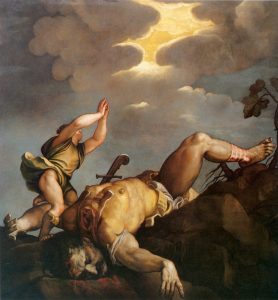
“the ‘Aravah to Lake Kinneret eastward and to the sea of the ‘Aravah, the Dead Sea, eastward by way of Beit-Yeshimot and on the south under the slopes of Pisgah. There was also the territory of ‘Og king of Bashan, who belonged to the remnant of the Refa’im. He lived at ‘Ashtarot and at Edre‘i.”-Joshua 12:3-4
In my last post, I talked about how the north-south boundary was established along the Trans-Jordan.
Today, in verse 3, we’re shown how the east-west boundary was established.
This was that boarder line of the Jordan River that extended from the Sea of Galilee (at that time called the KINNARETH) and flowed all the way down to the Dead Sea.
I used the wording “east-west boundary” but truthfully this was really only the western boundary because the eastern side is actually NOT given.
Onward, from verse 4, we’re introduced to an interesting character called Og King of Bashan.
Bashan was an area located north of Sihon and contained the most fertile soil for producing crops anywhere in the Middle East.
This land was so fertile that the surrounding nations were constantly warring to get a piece of this hot territory.
And you can imagine, as a result, Israel went through hell and high water to maintain control over this sizzlin’ hot piece of holy land real estate.
In fact, ancient Israel never really gained complete control over this area until King David came unto the scene and then afterwards his son Solomon maintained sovereignty over the area.
Finally, we’re reminded that King Og was part of that race of “giants” known as the Rephaim.
This unusually huge race of people (normally called “giants” in most Greek Bible translations) did not form their own nation.
Instead they scattered themselves and lived all over the place.
Based solely on their physical size and brute strength, many of them rose to power wherever they decided to settle and some even became renowned warriors.
Of course, Goliath, who King David slew, is probably the most famous of the Rephaim.



Leave a Reply